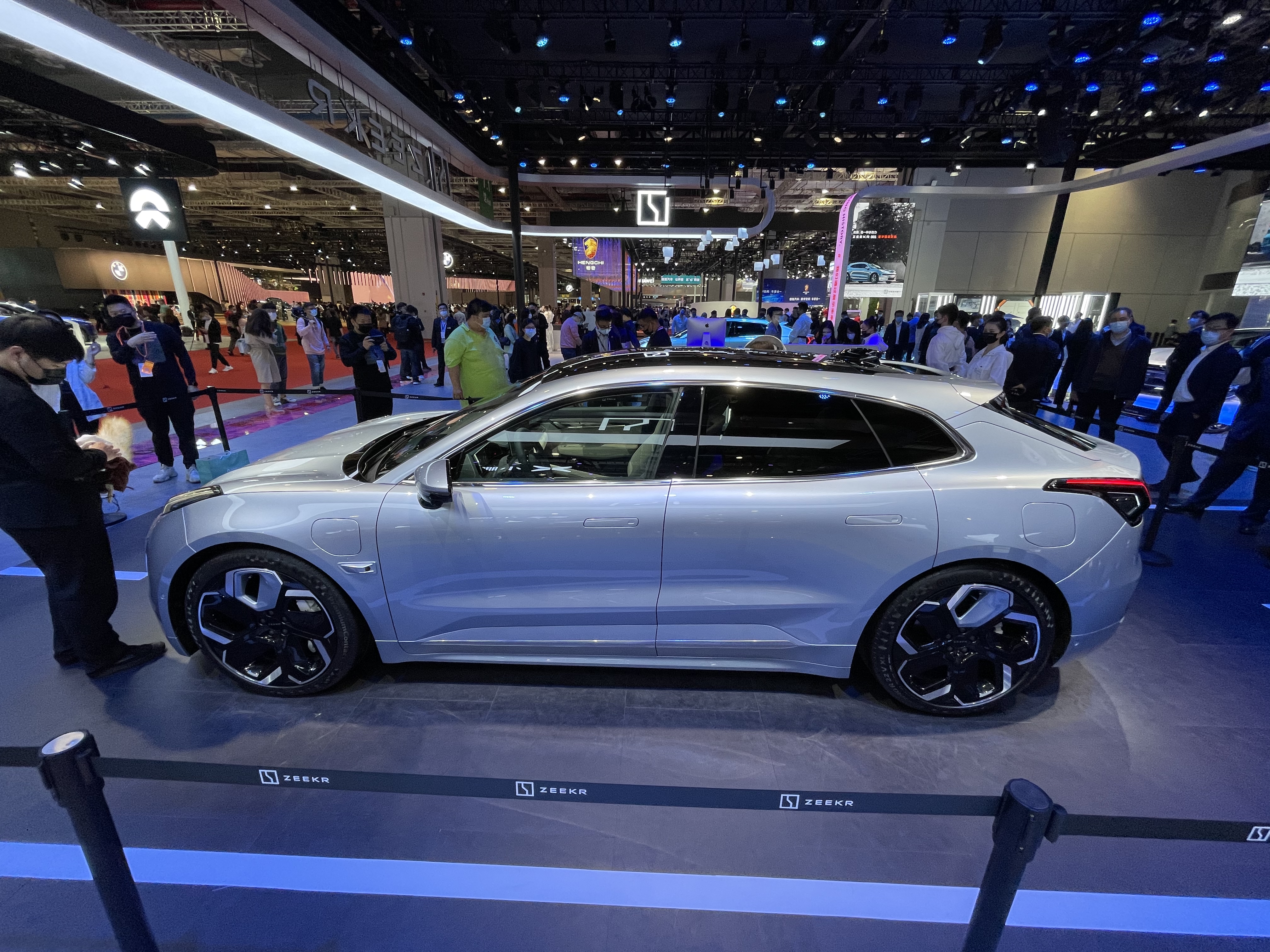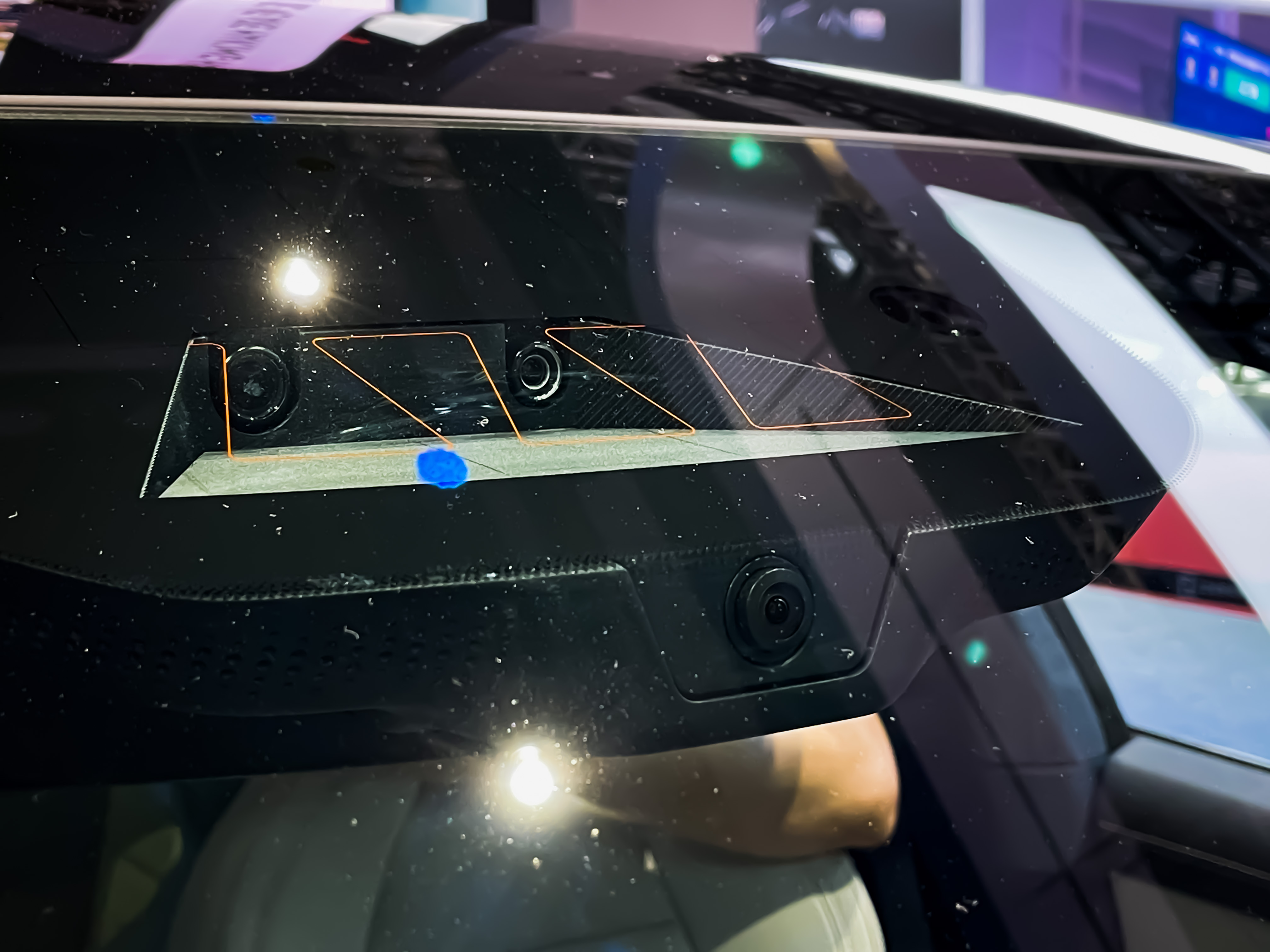The extreme Tesla-killer, Zeekr001, which was released on April 15th, made a sensation and caused a lot of discussions in the groups I participate in.

Among them, the WE version of Zeekr001 is the first sports car that offers a range of 526 km with 3.8-second acceleration and a range of 712 km with 6.9-second acceleration. Although the specifications seem not to be particularly outstanding, the price is amazing! Both versions are priced at 266,000 yuan, which means that you can get a vehicle with near Model 3 Performance performance for only a little more than the price of the Tesla Model 3 lithium iron version. In addition, the Zeekr001 offers multiple colors, 21-inch large wheels without additional charges, as well as basic auxiliary driving, HUD and other features, which makes it an extraordinary value vehicle. When the pre-order was opened at 9 o’clock, the group exploded with excitement, and screenshots of order placements were shared everywhere. The next day, a friend from the 42HOW Garage asked me if I wanted to go to the auto show to see their car. Without any hesitation, of course I said yes!
Interior and Exterior Design
I had seen many pictures of Zeekr001 before the auto show, and it looked great with a powerful appearance. The vehicle’s length is nearly 5 meters with a height of 1.56 meters, which provides a strong sense of power.



The overall width of the vehicle is 1999 mm, which is larger than Model X’s width of 1920 mm. Given the fact that parking spaces in China are relatively small, the width of the vehicle coupled with the charging gun usually exceeds the width of a car space. Given this basic condition, the manufacturer provides an optional electric door for 15,000 yuan.
The electric door uses an ultrasonic sensor on the door to detect obstacles and adjust the opening size accordingly. In a simple test at the auto show, the door opened to a distance of about 5 cm from the obstacles on the outside.
 Compared with other luxury cars that have door control buttons installed on the B or C pillar, the electric doors of Zeekr’s vehicles require pulling the door handle to trigger the electric closing of the door. On the one hand, pulling the door handle is indeed slightly easier than pulling the door directly, but on the other hand, it requires reaching out to grab the handle, which can be inconvenient during the experience. It remains to be seen whether the official can update the function through the rear instrument panel or armrest button in the future.
Compared with other luxury cars that have door control buttons installed on the B or C pillar, the electric doors of Zeekr’s vehicles require pulling the door handle to trigger the electric closing of the door. On the one hand, pulling the door handle is indeed slightly easier than pulling the door directly, but on the other hand, it requires reaching out to grab the handle, which can be inconvenient during the experience. It remains to be seen whether the official can update the function through the rear instrument panel or armrest button in the future.
Based on my current experience, I don’t recommend choosing this option. Adding an electric door function at this price point is similar to what XPeng did with Peng Wing doors on the P7 model. Functionality and experience are secondary, and it’s more about seeing the manufacturer’s efforts to improve the brand.
The workmanship and materials of the interior decoration of the vehicle are much better than those of other models at the same price point. Soft plastic materials are used on the door panels and dashboard, and leather wrapping is used in most places that the human body comes into contact with. The dashboard of the Zeekr 001 model is not a straight line but has a concave design on the instrument panel. The dashboard trim adds a pattern, and a few frequently used buttons are fixed below the central control screen with a layered design. The traditional gear lever is still there, as well as two Bling Bling cup holders, and a wireless charging area for mobile phones is located in the front of the central control screen.

The comfortable and soft rear seats have sufficient legroom and backrest angle with adjustable angles, and a boss key is equipped on the right door panel. From the styling design to promotion, Zeekr 001 has been emphasizing its performance, and the comfortable type of this seat really exceeded my expectations. Even for ordinary fossil fuel vehicles at this price point, it’s hard to find a comparable one, not just a performance car. I even think that the boss key and adjustable rear seats of the Zeekr 001 configuration are somewhat beyond the scope of this type of vehicle.

What confuses me is that there are three packages available to choose from, “Intelligent Massage Seat Comfort Package,” “Winter Warm Package,” and “Intelligent Constant Temperature Air Conditioning Package.” Personally, what I need most is a heated steering wheel and ventilated front seats, but they are split into two different packages, and there is no option for ventilated front passenger seats. I hope the manufacturer can optimize these options.
Intelligence
There are mainly four screens for human interaction in the cabin. The front row has an 8.8-inch elongated instrument panel, a 15.4-inch horizontal central control screen, and a WHUD. There is a small display screen in the rear row.
 The car’s chip uses 820A Prime, and according to the staff, this version has more than 30% performance improvement compared to 820A on the Ideal ONE and P7. The large number of models to be delivered next year will be equipped with 8155 chips. In the following years, the level of intelligence and application in cars will increase, and the demand for performance will also increase, as the limitations of performance will increasingly affect the user experience. However, there are rumors that officials are considering the possibility of chip upgrades.
The car’s chip uses 820A Prime, and according to the staff, this version has more than 30% performance improvement compared to 820A on the Ideal ONE and P7. The large number of models to be delivered next year will be equipped with 8155 chips. In the following years, the level of intelligence and application in cars will increase, and the demand for performance will also increase, as the limitations of performance will increasingly affect the user experience. However, there are rumors that officials are considering the possibility of chip upgrades.
In the exhibition car state, the instrument panel displays basic vehicle energy consumption and other information. In the state of auxiliary driving, the usual practice is to display lane simulation information in the instrument screen. The driver can understand the ability of auxiliary driving and the predictive ability of the system through lane simulation information. A wider horizontal space can display more lane information, and a longer vertical space can display information of vehicles further away from the current vehicle.

The central control screen is similar in size to that on Model 3, and the UI features a bottom dock plus a multi-card layout, with each card having several icons for quick operation. Currently, individual cards are only similar to plugins, providing simple shortcut operations. The specific content needs to be viewed by clicking into the App. For example, when using navigation, the entire navigation page will occupy the entire screen. Navigation is a very high-frequency and necessary function during driving, but it will affect the ease of operation of other functional modules at this time. We hope to optimize this in subsequent OTA updates.
Intelligent Driving
The vehicle is equipped with two Mobileye EyeQ5H chips, with 15 8-megapixel cameras (7 of which participate in auxiliary driving perception), one 250-meter millimeter-wave radar, and 12 short-range ultrasonic radars. The standard configuration has basic highway auxiliary driving, and higher-level navigation-assisted driving and inner-city driving assistance can be added later.

The 7 sensing cameras are enough to provide 360° visual perception ability, and the 8-megapixel camera can detect vehicles 600 meters ahead. Compared to the 8 1.3-megapixel cameras currently on Tesla, the field of view of the Xpeng P5 is undoubtedly better.Mobileye has announced their pure visual route subsystem SuperVision, which utilizes 360° perception for front fusion, followed by 2D-3D conversion of the combined information. By using cameras, it creates a deep scene similar to Lidar. Zeekr 001 has added a forward 250-meter Radar to enhance the detection ability of front-running objects based on this system. At CES 2021, Mobileye showcased a vehicle equipped with this system seamlessly navigating through the city streets of Munich. The only difference being that the vehicle showcased during the event was equipped with a tower-style side front camera on the roof (reference ET7), whereas Zeekr 001 has installed the side front camera in front of the rearview mirror. Compared to the roof, the rearview mirror is installed at a lower height and has a smaller field of view. In cases such as pedestrians crossing the street and vehicles closely surrounding the car, the visibility may be more limited, which poses a greater difficulty in handling.
Overall, this advanced driving assistance system’s hardware equipment is near the top in 2021, providing enough space for software and algorithm upgrades and iterations. With the deep involvement of Mobileye, it is expected that the technology will perform well.
In terms of configuration, Zeekr 001 has almost no faults in the static experience. Compared to vehicles in a similar price range of RMB 260,000 to RMB 350,000, such as the Model 3 and P7, Zeekr 001 has better acceleration, longer endurance, and more spacious interior. Compared to the higher-priced Model Y, the acceleration is faster, and the rear seats are more comfortable. Based on the test drives conducted by car journalists and the official tone, the driving quality and NVH-related aspects are also well-prepared to surprise the users. However, it remains to be seen whether all the promises have been kept as described.
In the age of intelligent electric vehicles, competition is no longer confined to the vehicle itself. Service capability, charging infrastructure, and the speed of intelligent iteration will also be key factors that consumers consider. The top three automakers, Tesla, NIO, and Xpeng, have already established considerable capabilities in these areas over the past few years, with building each individual capacity requiring significant capital expenditure. The question for prospective buyers is whether Zeekr 001 is ready for a grand endeavor.
This article is a translation by ChatGPT of a Chinese report from 42HOW. If you have any questions about it, please email bd@42how.com.
